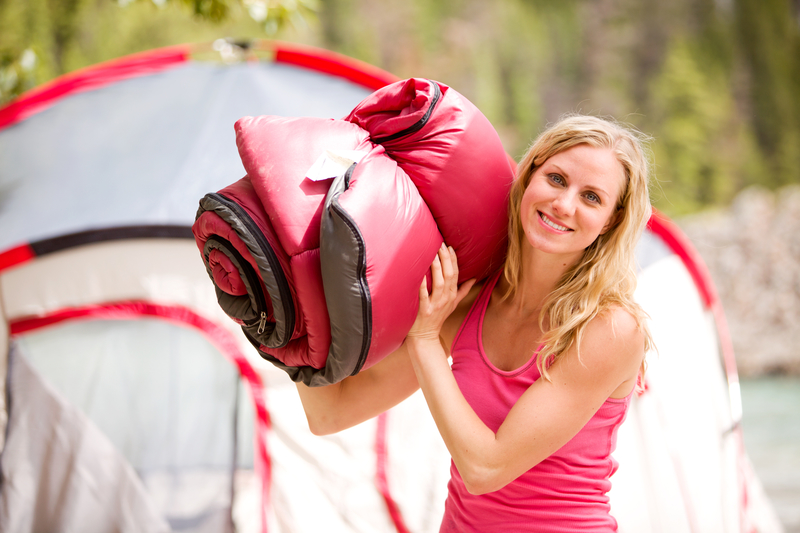As the summer season approaches, it’s important to make sure that you have the right camping gear for the season. A summer sleeping bag is a must have for any camping trip or hiking adventure.
There are so many summer sleeping bags on the market, it’s important to get the right one for you. There is no such thing as the perfect sleeping bag for every occasion. That means you’re going to have to make some decisions about what you need from a summer sleeping bag.
There are many considerations involved when buying a summer sleeping bag. All this can make choosing a bag rather confusing and stressful. That’s why you need to read on to find out what you need to know before buying a summer sleeping bag.
Know Where You’ll be Camping
How can you choose a summer sleeping bag before you know where you’ll be camping?
Important things to consider are; the weather. Unfortunately, the summer isn’t guaranteed sun. That’s why you need to think about the altitude. Are you sleeping on top of the mountains?
If it’s hot and sunny in the daytime at the bottom, that doesn’t mean it’s warm at night on the tops. And also, the wind. Are you sleeping in an area with strong winds?
Then you need to know whether you’re going to be camping under a shelter or whether you’re going to be under the stars. It’s not so romantic if you’re sleeping bag isn’t suitable for the outdoors.
Lastly, how long are you going to be staying in the summer sleeping bag?
Temperature Ratings
Sleeping bags are normally marked clearly with the temperature rating. Most summer sleeping bags are rated at +35 degrees Fahrenheit or higher.
A good tip is to get a sleeping bag that’s rated at a slightly lower temperature than the lowest temperature you expect to experience. It’s always easier to cool yourself down on a hot night by unzipping the side of the bag than it is to get warm in a sleeping bag that is not keeping you warm enough.
Liners
To continue on the topic of temperature; the beauty of summer sleeping bags is that you always have the option to add another liner.
This provides you with some flexibility in different temperatures. This can be especially useful when it comes to hiking in which the climate differs over the course of your trip. Even if you’re sleeping indoors, an additional liner can be indispensable if you find yourself in a hostel with dubious bedding arrangements.
Liners are usually available in a wide range of fabrics and shapes to fit your bag. Everything from silk and fleece to cotton and wicking synthetics.
Insulation – Synthetic or Down?
There are two types of insulation of sleeping bags that you need to know about; synthetic and down.
Let’s start with synthetic sleeping bags. Synthetic fibers come in all sorts of shapes and textures that provide a better warmth to weight balance in comparison to down. One of the truly great aspects of synthetic insulation is that even your bag gets wet, it keeps you warm.
On the other hand, despite the many benefits of the synthetic option, they are mostly heavier than the down bags and are not as long-lasting.
The other insulation option is a down summer sleeping bag. As a natural and effective insulator, goose down is more durable than synthetic. If looked after well, you won’t need to buy another summer sleeping bag ever again.
Storing down bags in your backpack is not a problem. While synthetic bags are quite bulky, the down bags can be easily stuffed into small spaces in your backpack. This extra room could be put to good use.
One of the negative aspects of down bags is that, in contrast to synthetic bags, they often lose their insulation qualities when wet. The good news is that manufacturers have recently substantially mitigated this drawback with the introduction of waterproof shell materials. However, it’s still advisable to keep down bags in a waterproof cover, or if you’re desperate, a plastic garbage bag.
Finally, down bags tend to be the more expensive insulation option.
Shape – Mummy, Rectangular or Semi-Rectangular?
There are many different shapes of summer sleeping bag on offer.
The first example is Mummy bags.
Mummy bags are perhaps the coziest of bags and you can often tuck your head into the insulated part of the bag as well. This allows you to close the opening to retain the heat in the bag and keep you warm. Mummy bags are the lightest bag and the best at retaining heat.
Rectangular sleeping bags are the most well-known bag shape.
Although the mummy bags keep you warmer, rectangular bags leave space for you to move around during the night. This is important for people who can get a little claustrophobic in such tight spaces.
Also, if you’re camping in hot weather, the fact that rectangular bags don’t retain the heat as well, may be an advantage. The double zip option found on most rectangular bags allows you to use it as a flat blanket or to put two bags together if you want to share with someone else.
The final shape option is the so-called semi-rectangular summer sleeping bag. This is a relatively newer model that is considered a compromise between the two. This provides you with greater room to move around than the mummy bag while retaining more heat than the standard rectangular bag.
Final Thoughts on the Summer Sleeping Bag
There are many further features such as pockets and pillow sleeves that are simply a matter of personal preference.
Now you know how to choose a summer sleeping bag for hot days in summer. Happy Camping in your summer sleeping bag!
If you have any further questions, comments or experiences to share, please leave them below!

